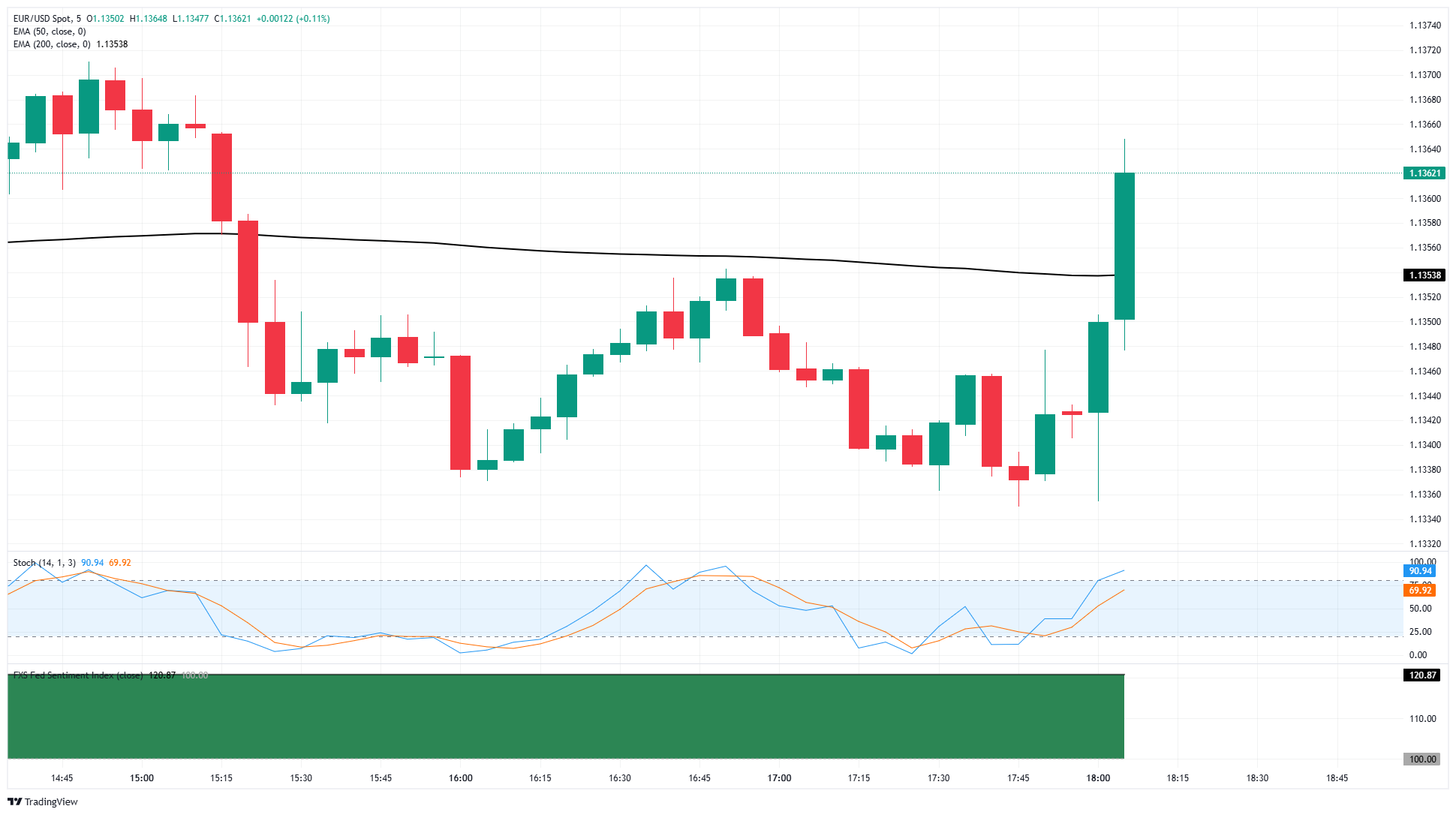EUR/USD jumps despite Fed rate hold as markets still see cut in July
- EUR/USD bounced from 1.1335 to 1.1365 after the Fed held rates steady at 4.5%,
- Market tensions remain elevated, but investors noted a slight shift in Fed policy tone.
EUR/USD churned within intraday levels after the Federal Reserve (Fed) held interest rates at 4.5% on Wednesday. Markets had broadly forecast a flat stance from the Fed for its May rate call, but the key for investors will be how much the Fed shifts its stance toward future rate cuts.
According to the Fed's rate announcement, policymakers have noted that, while US employment and economic activity remain firm overall, risks to both labor and output have risen, largely at the hands of policy uncertainty surrounding tariffs and US trade. The unease from Fed officials surrounding economic risks helped to pin market hopes for impending rate cuts on the high end, sending risk appetite counter-intuitively into the ceiling.
Read more Fed news here: Fed leaves policy rate unchanged as expected
More to come...
EUR/USD 5-minute chart

Interest rates FAQs
Interest rates are charged by financial institutions on loans to borrowers and are paid as interest to savers and depositors. They are influenced by base lending rates, which are set by central banks in response to changes in the economy. Central banks normally have a mandate to ensure price stability, which in most cases means targeting a core inflation rate of around 2%. If inflation falls below target the central bank may cut base lending rates, with a view to stimulating lending and boosting the economy. If inflation rises substantially above 2% it normally results in the central bank raising base lending rates in an attempt to lower inflation.
Higher interest rates generally help strengthen a country’s currency as they make it a more attractive place for global investors to park their money.
Higher interest rates overall weigh on the price of Gold because they increase the opportunity cost of holding Gold instead of investing in an interest-bearing asset or placing cash in the bank. If interest rates are high that usually pushes up the price of the US Dollar (USD), and since Gold is priced in Dollars, this has the effect of lowering the price of Gold.
The Fed funds rate is the overnight rate at which US banks lend to each other. It is the oft-quoted headline rate set by the Federal Reserve at its FOMC meetings. It is set as a range, for example 4.75%-5.00%, though the upper limit (in that case 5.00%) is the quoted figure. Market expectations for future Fed funds rate are tracked by the CME FedWatch tool, which shapes how many financial markets behave in anticipation of future Federal Reserve monetary policy decisions.

